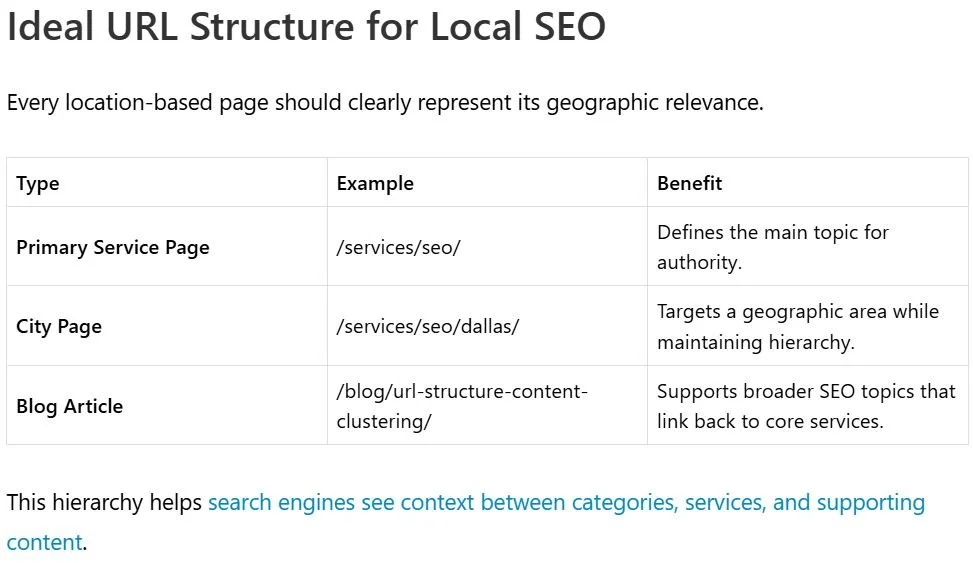URL Structure + Content Clustering: A Combined Approach for Local SEO Domination
Many businesses focus on keywords and backlinks but overlook how much URL structure and content clustering influence visibility. Together, these elements help organize information, improve crawling, and build local authority across multiple cities.
Why Structure and Clusters Belong Together
A clean URL structure tells search engines how your content connects. Clusters take it further by grouping related pages under a common topic. This combination ensures every new blog or service page reinforces your brand’s local expertise. When structure and clustering align, search engines interpret relationships faster, and visitors navigate your site more naturally.
Building a Cluster Around Local Pages
Clusters revolve around a central pillar page—often your main service or location hub. Supporting pages then link to and from that hub, forming a structured web of authority.
A simple model:
Pillar page: “SEO Services” overview
Cluster pages: City-specific pages (e.g., Dallas, Austin, Denver)
Supporting blogs: Localized articles that feed authority into each cluster
This structure lets link equity flow naturally across your domain and strengthens topical relevance for every region.
5-Step Clustering Workflow
Audit existing URLs. Identify overlapping or duplicate paths.
Group content by topic. Assign each cluster a clear pillar.
Standardize naming conventions. Keep slugs short, lowercase, and keyword-relevant.
Add internal links. Use contextual anchors between blogs and service pages.
Review analytics quarterly. Consolidate or update weak-performing clusters.
Following these steps makes your structure scalable as you expand into new cities or verticals.
Common Mistakes to Avoid
Using dynamic URLs with random strings like ?id=345.
Creating multiple paths for the same page.
Forgetting to redirect outdated slugs after redesigns.
Publishing isolated blogs that don’t connect to a service page.
These small errors can confuse crawlers and limit ranking potential across local markets.
Combine Local Schema and Clusters
Add LocalBusiness schema to pillar pages and reference key service URLs inside it. This reinforces location intent and strengthens internal relationships that are essential for local SEO domination.
Related Reading
Explore more technical and local optimization topics. It will quickly become obvious how local SEO plays a role in attracting visitors that will, in turn, be converted into new leads and customers. Full implementation takes time, but results will become noticeable every step of the way.
Final Take
URL structure and content clustering form the foundation of scalable, high-performing local SEO. When built strategically, they give search engines the clarity they need to rank your business higher in every market you serve. Keep in mind that each location is not a new website, but rather an extension of your services into new regions or markets.

